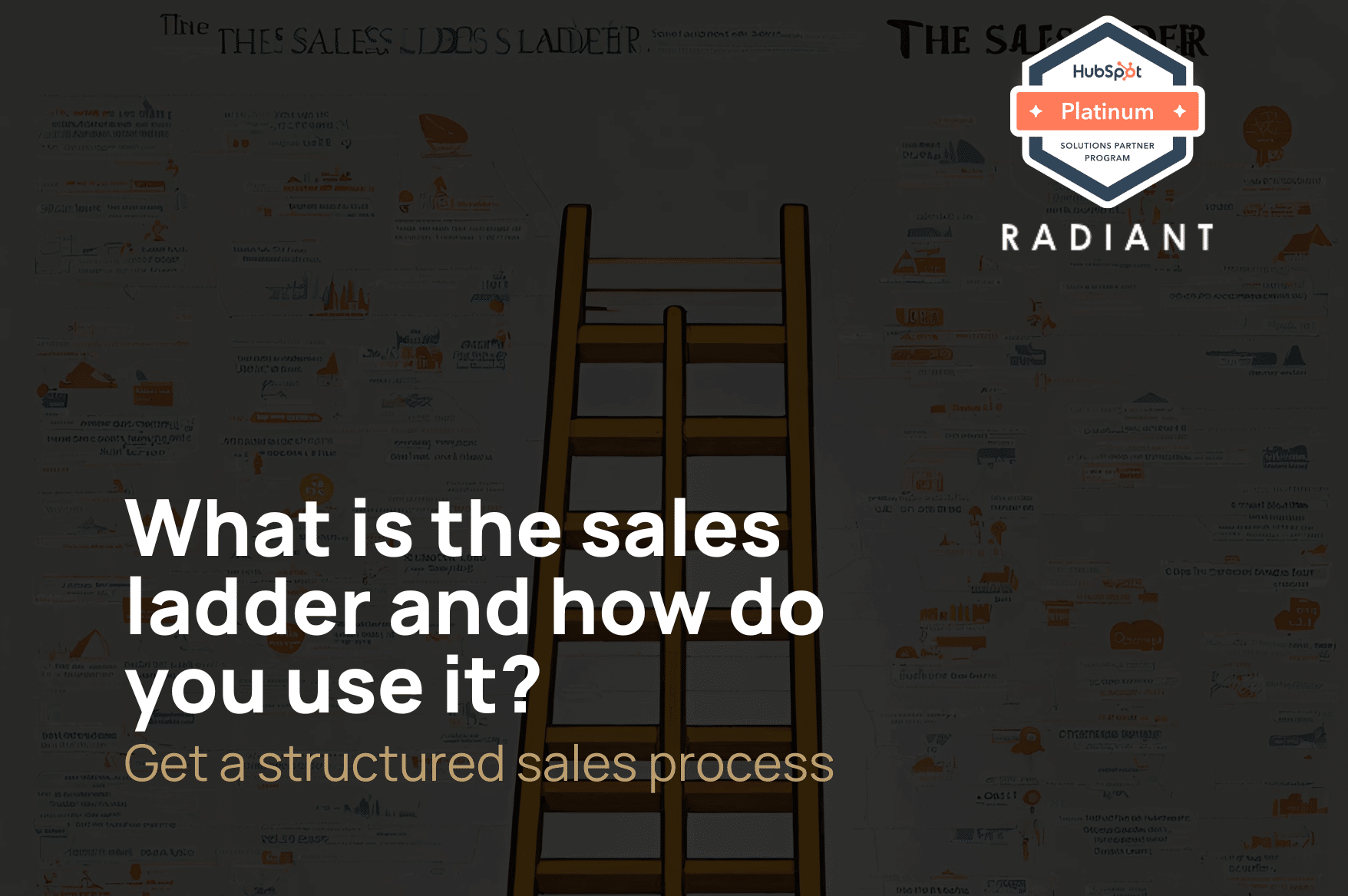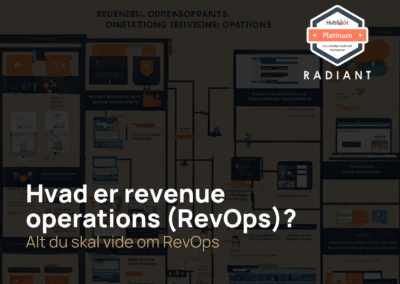When it comes to managing sales, leads, deals , etc. there are many balls in the air and a constant overview is vital. This is exactly what a pipeline is used for. As a sales director or marketing director, you should have a clear overview of upcoming deals, how far along leads are and which ones have been lost and won. Read more about how to implement, analyze and improve your pipeline here.
What is a Pipeline?
A pipeline is an overview of the stages a lead/deal etc. must go through to convert. To make it easy, it might be a good idea to imagine a sales pipeline where you start with a meeting, then send a contract, the customer is won or the customer is lost (simplified version). Here you will be able to see each stage of the pipeline, target sales resources, marketing, etc. at each stage and identify bottlenecks.
A pipeline is a complete overview of the stages a lead will go through – it is typically used in B2B.
The sales pipeline is the most common pipeline and represents the journey from a potential customer (prospect) to a customer. It often starts with a large number of potential contacts that narrow down to the bottom of the funnel where the final sales are made. It similar to a marketing funnel in the way its structured
This funnel will look different depending on the industry you work in and is most commonly found in B2B sales. You can compare it to a customer journey: at the top end is awareness, then consideration and finally a purchase decision.
The funnel’s effectiveness shows in sales results and is an essential part of an effective sales strategy . A well-defined pipeline with clear steps can help salespeople improve conversion rates, shorten sales cycles and optimize resource utilization.
In 2022, 72% of CSOs said that working with the sales pipeline and optimising it was their priority.
The most important elements of a sales pipeline
An effective sales pipeline consists of different elements that aim to drive sales and ensure a happy customer. These elements are central to pipeline management and ensure that your sales process is smooth, efficient and consistent in producing results.
- Leads: These are potential customers who have shown interest in your products or services (typically obtained through lead generation)
- Qualification: This step includes the process of assessing and ranking leads based on their likely willingness and ability to buy.
- Quotation: Here you present a detailed quote to the customer, which includes specific solutions for their needs.
- Negotiation: This involves discussions about pricing, terms and other details that will shape the final agreement.
- Closing: The final step where the sale is completed. The customer’s confirmation and payment marks the end of the sales funnel.
Read here how Radiant handles sales through Sales as a Service for a number of companies and has generated more than 75 million in ARR.

Benefits of having a clear pipeline definition
Clearly defining your sales pipeline is crucial for both your sales and marketing efforts. This definition gives everyone on your team a clear understanding of what each step of the sales process entails, enabling them to work more efficiently and ultimately improve your company’s bottom line. Below are some of the benefits of a clear pipeline defined:
- Accurate and sharp sales forecasts
- Tracking sales activities and customer conversations
- Easier identification of potential bottlenecks in the sales funnel
- More efficient resource allocation
Get an introduction to how to get more through your impact pipeline
Identifying your sales steps
Identifying your sales stage can be done by analyzing past sales, talking to leads and finding out how others are doing it.
Streamlining your sales involves carefully reviewing your sales stages, identifying weaknesses and strengths in each stage, and taking concrete actions to address challenges.
Analyze your existing sales process
Conducting an in-depth analysis of your current sales process is essential to identify both strengths and weaknesses. It will involve looking at the parts of your process, from first customer contact to winning deals.
Analyzing your existing sales process helps you strategically identify areas where you can improve and streamline.
Defining Specific Sales Steps in the Pipeline
Defining specific sales steps is essential for building an efficient and well-structured sales pipeline and sales process. These steps are designed to help you understand where you need to improve your efforts and what needs to be done to move leads forward.
- Identify the stages that occur in your sales process.
- Create concrete definitions for each sales step to ensure everyone understands what needs to be done at each stage.
- (if possible) Integrate your CRM system (we use HubSpot for this ourselves) with your pipeline to help manage your contacts through each phase.
- Set clear goals for each sales stage to help your B2B sales reps understand what needs to be achieved.
- Regularly assess the effectiveness of each sales step to identify possible improvements or adjustments.
Read more about the 7 steps in the HubSpot sales pipeline
Maximize the efficiency of your pipeline
Implementing an effective sales pipeline is something we’ve seen our customers benefit from the most when it comes to increasing revenue. Standardizing sales activities, identifying bottlenecks, and using technology can all help streamline the process, increase productivity and ultimately win you more customers.
To maximize the efficiency of your pipeline, it’s important you analyze, monitor and try to optimize your pipeline. Your pipeline should be the tool that gives you a complete overview of which leads you need to close and how to get there.
Identifying bottlenecks in your sales pipeline
Identifying bottlenecks in your sales pipeline is a crucial task to streamline the sales process. By using a CRM system, you can pinpoint these problem areas and start working on solving them.
- Use sales data to spot patterns and trends that may indicate potential bottlenecks.
- Look at different KPIs
- Assess the impact of each sales step to optimize
See how HubSpot can be used for a better sales pipeline
Optimize sales activities in every sales step
Activity-based selling is a powerful way to optimize every sales step in your pipeline. By collecting data on which activities lead to conversions, you can continuously fine-tune your sales process to increase efficiency.
A concrete example of the above could be testing whether you can move a lead to the next stage the fastest through email, phone calls, advertising or a combination.
Using automation and technology to streamline the process
Sales automation can be a great way to move leads further along the sales pipeline. This eliminates man hours, creates more time for other tasks and minimizes human error.
With a CRM system, complex sales processes can be simplified and accelerated by automating different steps in the sales pipeline. This will ensure that you don’t experience bottlenecks, lose customers because you weren’t top-of-mind or miss a lead.
Focus on the most important leads with lead scoring
Through lead scoring, you can quickly get an overview of which leads are most interested in your business. This can be based on how many times they have visited your website, opened an email or downloaded a webinar/whitepaper. Each action gives a different number of points depending on the weighting of the action.
Read more about lead scoring.
Use a CRM system as a pipeline management tool
1) Automate your pipeline flow
With a CRM system, you can set up criteria that define what a lead is, how likely it is to convert into a sale, and how to most effectively follow up with each customer.
In other words, you can define your sales best practice and then implement each step in your CRM system to automatically create tasks and notify salespeople.
2) Simple pipeline management
Is the sales team still working manually with pipeline management, or do you remember how long it took to create sales estimates in other systems and Excel sheets?
With a CRM, those days are long gone. The automated pipeline flow eases administration for both employees and managers. At the same time, you will have the opportunity to work systematically with all customer relationships.
3) Transparency and real-time reporting
Having all your activities in one place not only makes it easier to manage, it also provides full transparency in achieving your goals. Both the overall goal, but also specific goals for products, customers and the sales department.
If you keep your sales pipeline up to date, you’ll always have an accurate overview of where you stand in relation to your budget. This way, you can prioritize your sales activities and spend your time where it’s most beneficial.
Sales pipeline monitoring and analysis
Regular monitoring and analysis of your sales pipeline is a crucial step in the process of improving and optimizing your sales process. By monitoring your pipeline, you get a holistic view of your sales process, identify bottlenecks and opportunities, and strengthen your strategic decision-making.
The benefits of careful monitoring and analysis include increased efficiency, better customer satisfaction and higher revenue. Below we have listed some of the places you need to take care of to monitor and analyze your sales pipeline.
Tracking key sales metrics
As with many other tasks, it’s important to set KPIs to define how your pipeline is performing overall and create KPIs for each stage. It can help you identify the performance of your salespeople and measure different strategies.
Use these KPIs to decide if you need to change your sales pipeline or if it’s running smoothly.
Analyze data to identify opportunities for improvement
Leveraging data is crucial to finding and capitalizing on sales opportunities. With the right analytical tools, you can spot trends and patterns that can lead to untapped sales opportunities.
With a CRM system like HubSpot, you can easily see how many leads/deals and how much contract value is in each stage, how long it takes for a lead to move from one stage to another and which stages are a bottleneck for you.
With a CRM system, analyzing your sales pipeline and identifying improvements becomes much easier.
Constant development of your sales pipeline
Developing your pipeline can be done through data analysis, but also include ongoing training, workshops and seminars that help keep your sales team up to date with the latest sales strategies and trends.
Stay up to date with the latest sales trends and methods
Staying up to date with the latest sales trends is essential to optimize your pipeline. With modern methods, you can improve the quality of your leads and increase conversion rates.
New sales methods can help you make your sales pipeline more efficient. From how to integrate new technologies to more intelligent segmentation, you’ll be able to better target your resources and ensure higher sales.
Leveraging new sales methods can give your pipeline a boost. The introduction of new technologies and strategies should be tailored to your company’s unique needs.
Education and training of your sales staff
It’s important to constantly educate your sales staff on pipeline management. Their ability to navigate through complex sales cycles and profitably convert potential leads largely depends on their skill level and understanding of the sales process.
Through effective training and education, your sales team will become more competent and confident. This can result in higher efficiency, greater customer satisfaction and, ultimately, more revenue.
Want Radiant to help you with Pipeline management and sales?
At Radiant, we are sales experts in sales and have helped more than 100 companies implement a CRM system and therefore a sales pipeline. This means we have more than 20,000 data points on sales processes and a broad knowledge of best practices.
We help companies with sales on a daily basis through Sales as a Service, including pipeline management. Here we represent you, book meetings, help streamline your sales process from smarter segmentation to how best to run your meetings and win the customer.





